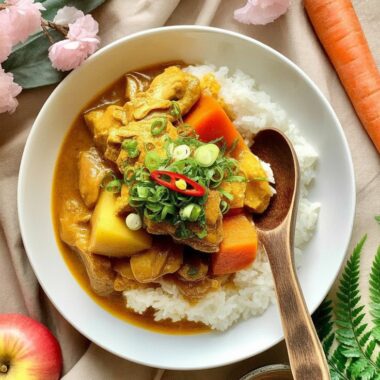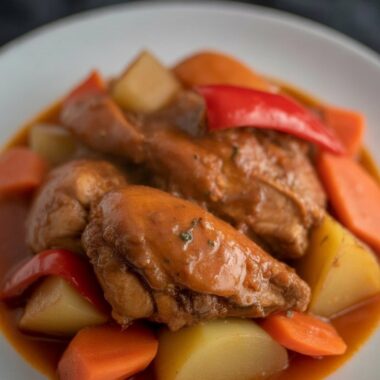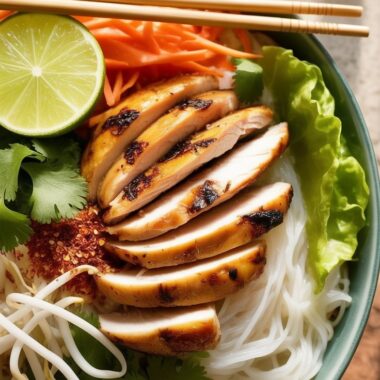Yakitori has always been one of those dishes that feels like a little celebration, no matter when you make it. It’s the kind of food that disappears from the plate before you realize how many skewers you’ve had. The smoky chicken, the sweet-salty sauce, the charred edges—it’s simple food but deeply satisfying.
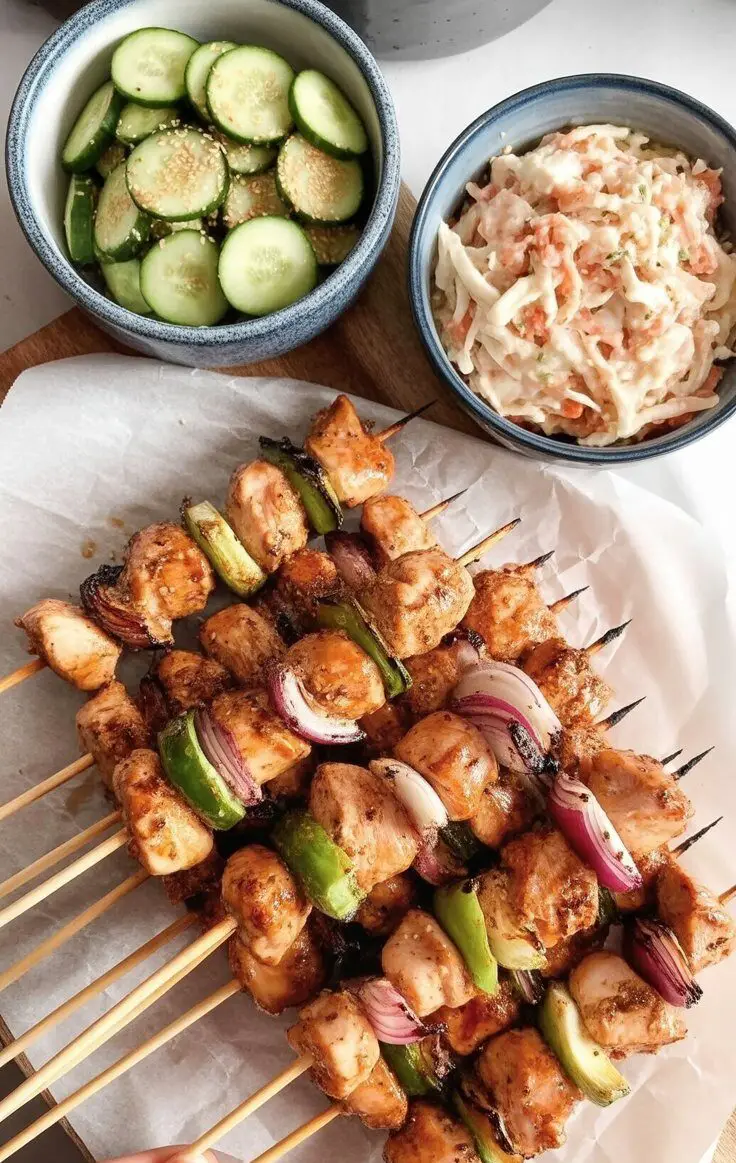 I still remember the first time I tried yakitori at a street stall in Japan. The air was cool, the grill smoke was thick, and the skewers were served straight into my hands, hot and dripping with sauce. It was one of those meals that stays with you, and ever since then, I’ve been hooked on recreating that same flavor at home.
I still remember the first time I tried yakitori at a street stall in Japan. The air was cool, the grill smoke was thick, and the skewers were served straight into my hands, hot and dripping with sauce. It was one of those meals that stays with you, and ever since then, I’ve been hooked on recreating that same flavor at home.
Why This Recipe Stands Out
There are plenty of chicken recipes that work for everyday dinners, but yakitori is special because it feels casual and fun without being fussy. You don’t need a big feast—just a few skewers, some dipping sauce, and maybe a cold drink on the side.
I often make these for small gatherings. My friends like standing around the grill, picking skewers straight off as they’re cooked. It turns dinner into an activity. Even on weeknights, I’ll sometimes throw a few skewers on the grill instead of doing a heavy dinner. It keeps things light and still feels satisfying.
Tips From My Kitchen
Soak Your Skewers – Bamboo skewers burn easily, so I always soak them in water for 20–30 minutes before threading the chicken. If I’m in a rush, I just dip them in water right before grilling.
Chicken Thigh Over Breast – Thigh meat stays juicier on the grill. It’s more forgiving if you get distracted (which happens often when I’m chatting while grilling).
Double Layer the Sauce – I always brush once halfway through cooking and again just before pulling the skewers off the grill. That last brush gives the meat a glossy finish and deeper flavor.
Don’t Overcrowd – Leave a little space between the meat pieces on the skewer so the heat can circulate. It cooks faster and gets that nice char.
One small trick I picked up: if you want your tare sauce to cling better, reduce it just a little more than the recipe calls for. A slightly thicker sauce holds beautifully on the chicken.
 Make Ahead Tips
Make Ahead Tips
Yakitori is one of those dishes that benefits from a bit of prep work. I usually cut up the chicken and vegetables earlier in the day and keep them in the fridge. Then, when it’s close to dinner, all I need to do is thread them onto skewers.
The sauce can also be made a day or two ahead. In fact, the flavor deepens as it sits. I keep a jar of tare in my fridge sometimes—it’s handy for brushing on grilled salmon, tossing with pan-fried tofu, or even drizzling over rice bowls.
If you’re hosting, you can assemble the skewers a few hours before guests arrive. Just cover them with plastic wrap and refrigerate. That way, when people come over, you can spend your time at the grill instead of in the kitchen chopping onions.
Serving Ideas
Yakitori works beautifully as finger food, but I often turn it into a meal. A bowl of steamed rice, some miso soup, and a little pickled cucumber salad make it feel complete.
If I’m serving these for a gathering, I’ll mix things up by adding skewered vegetables like onions, peppers, or asparagus wrapped in bacon. Kids especially love the bacon-wrapped asparagus—it’s usually the first thing to disappear.
And if you’ve ever been to a Japanese izakaya, you’ll know yakitori pairs perfectly with a cold beer. At home, it’s the same—these skewers are made for laid-back evenings and casual company.
Storing Leftovers
Yakitori rarely lasts in my house, but on the rare occasion that it does, here’s what I do:
Fridge: Store leftover skewers in an airtight container for up to 2 days. Reheat them quickly under a hot grill/broiler so they don’t dry out.
Freezer: I sometimes freeze uncooked skewers. Just lay them flat on a tray, freeze until firm, and then store in a bag. When I’m short on time, I can pull out a few and grill straight from frozen, brushing on sauce as they cook.
The sauce also keeps well. I like to simmer it again for a few minutes, cool it, and store it in a jar in the fridge. It’s almost like having liquid gold ready to go.
 Questions I Get Often
Questions I Get Often
Do I need a special yakitori grill?
Not at all. I use a small charcoal grill when I want that smoky taste, but I’ve also made yakitori on my gas BBQ and even under the oven broiler. As long as you can get good heat and a bit of char, you’ll be fine.
Can I make this with other proteins?
Absolutely. Pork belly, beef, or even mushrooms work beautifully. The sauce is versatile—it gives almost anything a sweet-savory kick.
Is it okay to marinate the chicken first?
Traditional yakitori doesn’t use a marinade—the sauce goes on during grilling. But if you want to experiment, a light soy and mirin soak won’t hurt. Just keep it simple.
Yakitori (Japanese Skewered Chicken)
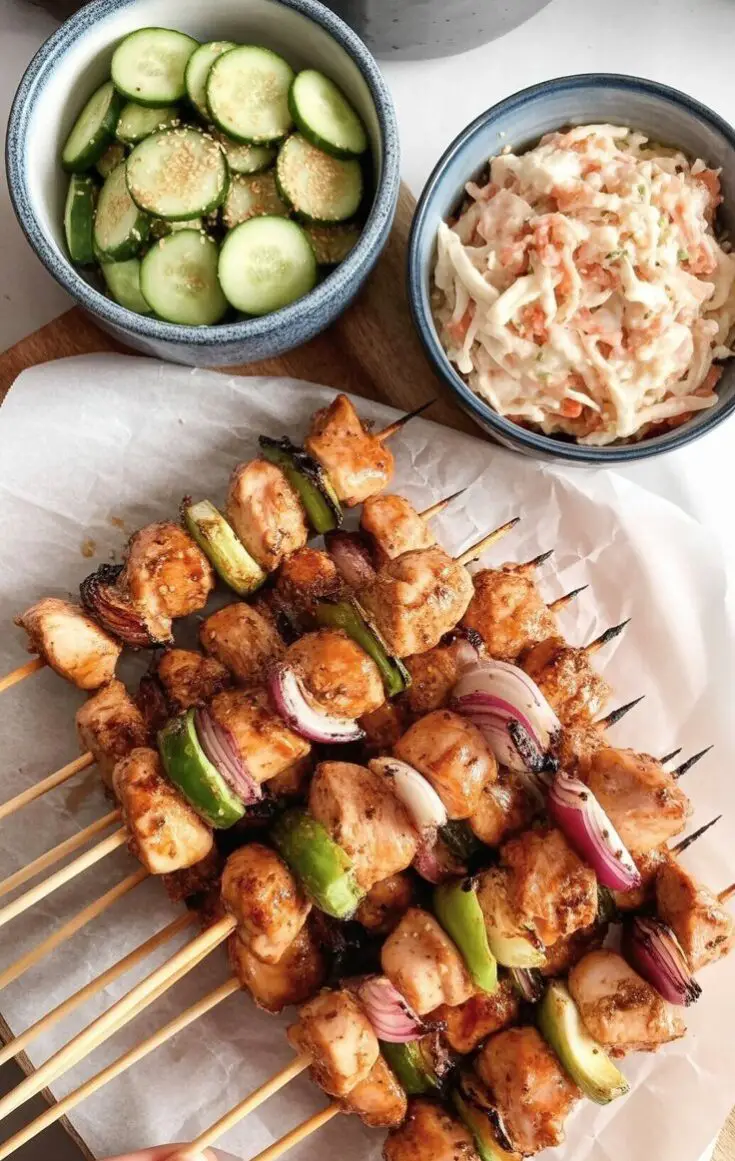
Juicy chicken skewers grilled over charcoal with a sweet soy glaze or just a sprinkle of salt—yakitori is a classic Japanese street-food favorite. Perfect for entertaining, these bite-sized skewers are fun to make, even more fun to eat, and always a crowd-pleaser.
Ingredients
For the skewers:
- 750 g (1.7 lb) skinless chicken thigh fillets, cut into 1-inch cubes (for momo)
- 450 g (1 lb) skinless chicken thigh fillets, cubed (for negima)
- 30 green onion pieces (about 1¼" long, white and firm green parts only)
- 4 small onions, sliced into thick rings
- 10 thick asparagus spears, trimmed (about 6" long)
- 40 strips thin bacon (about 360 g / 0.8 lb)
- Bamboo skewers (soaked in water for 30 minutes to prevent burning)
For the sauce (tare):
- 185 ml soy sauce
- 185 ml mirin
- 2½ tablespoons sugar
Instructions
- Start with the sauce: combine soy sauce, mirin, and sugar in a small pot. Bring to a boil, then reduce the heat and let it gently simmer until slightly thickened and reduced by about one-third. Set aside.
- Prepare the skewers:
- For momo: thread 4–5 pieces of chicken thigh onto each skewer.
- For negima: alternate chicken and green onion pieces, finishing with chicken.
- For onion skewers: carefully thread two onion rings crosswise onto each stick.
- For bacon-wrapped asparagus: blanch asparagus for 30 seconds, cool in ice water, then cut each spear into 5 pieces. Wrap each piece in bacon (pair the tip with the piece just below it) and thread onto skewers.
- Grill the skewers over medium-high charcoal or a hot BBQ grill. For chicken and onion skewers, brush lightly with the sauce and cook, turning and basting a few times, until caramelized and cooked through—about 8 minutes total.
- For bacon-asparagus skewers, cook without sauce until the bacon is golden and crisp, about 3 minutes per side.
- Alternatively, you can broil in the oven: place skewers on an oiled wire rack over a foil-lined tray, baste with sauce, and grill until lightly charred, turning and brushing with sauce a few times.
- Serve immediately with extra sauce for dipping and enjoy yakitori hot off the grill.
Nutrition Information:
Yield: 48 Serving Size: 1Amount Per Serving: Calories: 7020Total Fat: 452gSaturated Fat: 136gTrans Fat: 3gUnsaturated Fat: 316gCholesterol: 4169mgSodium: 6047mgCarbohydrates: 7gFiber: 0gSugar: 3gProtein: 767g
Asianplated.com, occasionally offers nutritional information for recipes contained on this site. This information is provided as a courtesy and is an estimate only. This information comes from online calculators. Although allchickenrecipes.com attempts to provide accurate nutritional information, these figures are only estimates.
A Few Final Words
Every time I make yakitori, it reminds me of why I love cooking: it brings people together. It’s not about fussing over the perfect plate but about sharing good food in a way that feels relaxed and joyful.
If you try this at home, don’t worry about making it look restaurant-perfect. Thread your skewers, brush on the sauce, and let the grill do its magic. And maybe, just maybe, make a few extra skewers—you’ll thank yourself later.
Try other Japanese recipes:

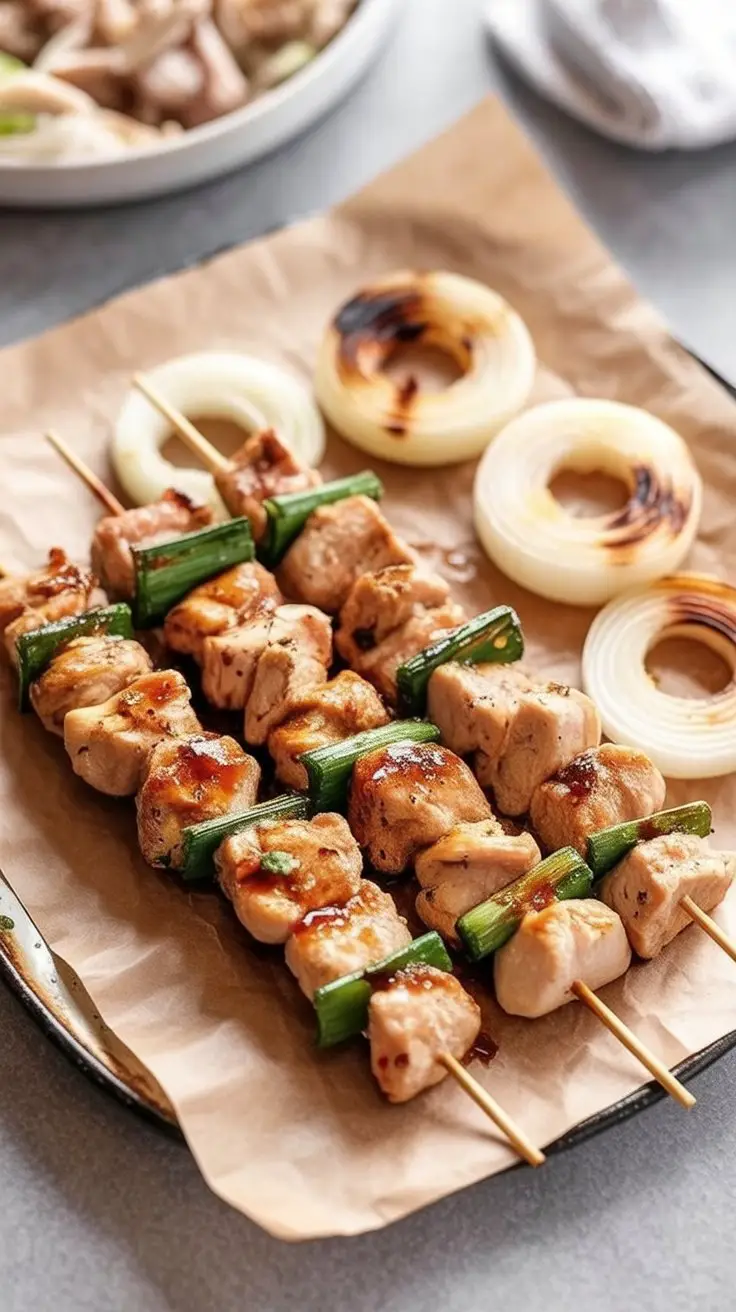 Make Ahead Tips
Make Ahead Tips Questions I Get Often
Questions I Get Often
